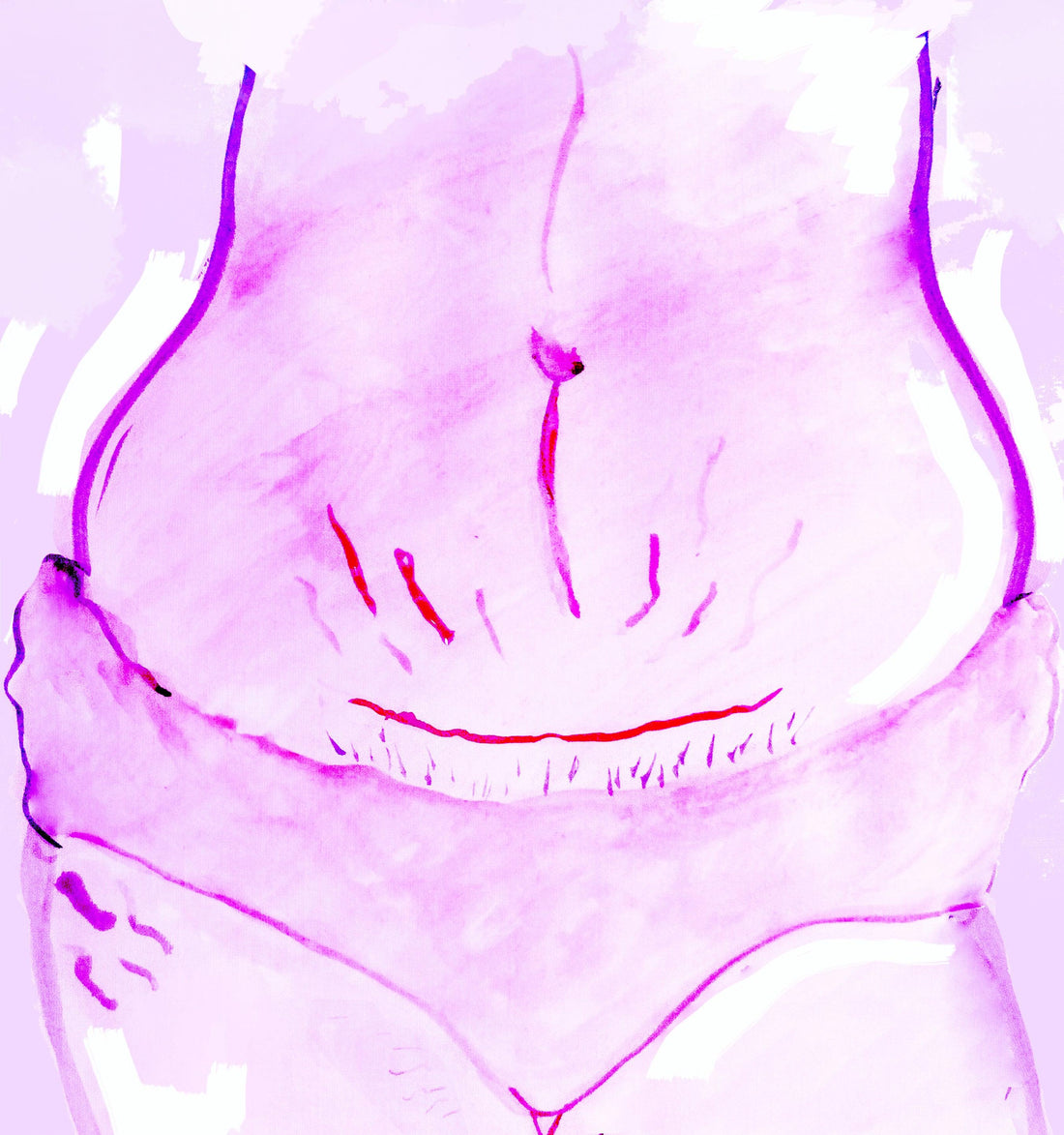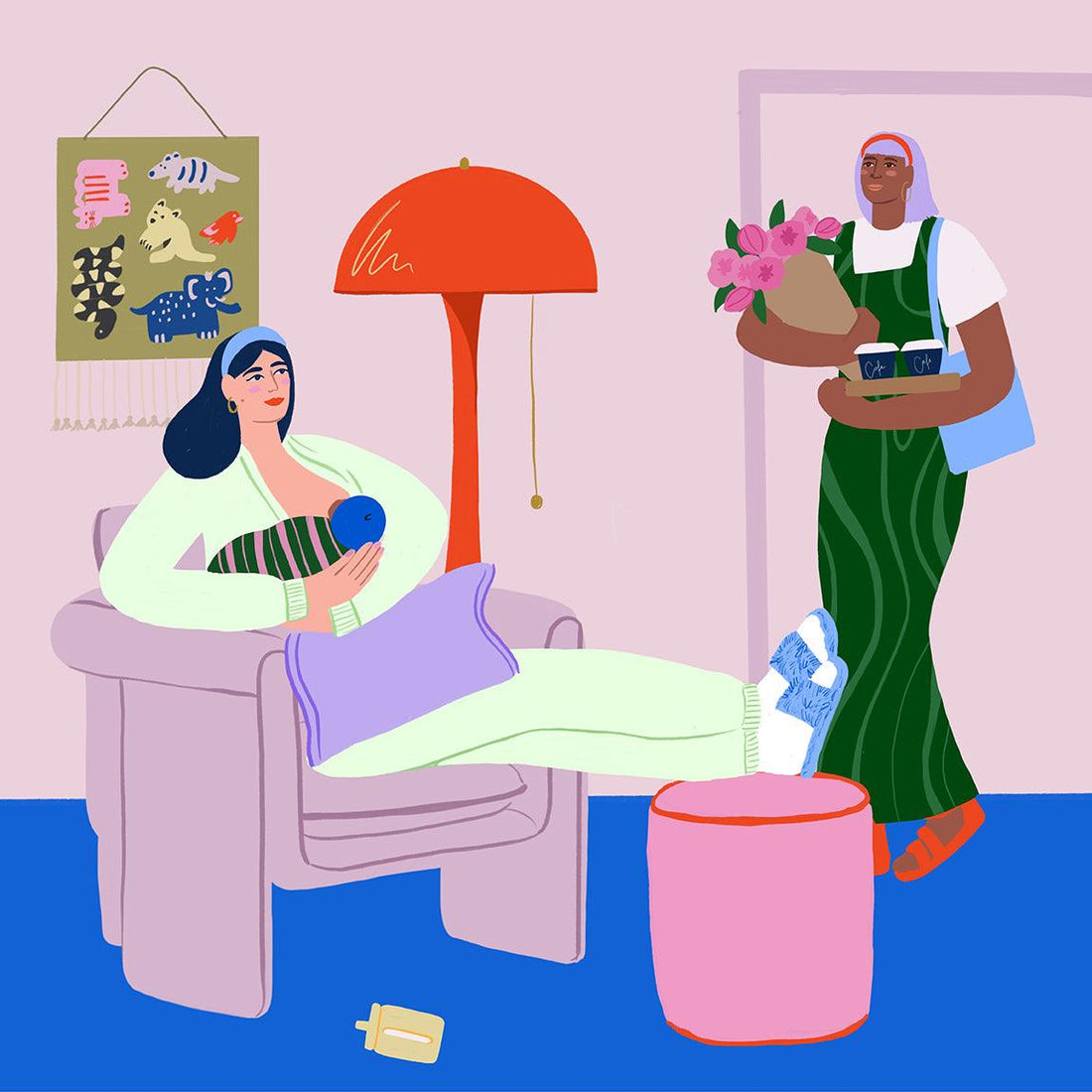From our AMAs to our pages, here's what our community wish they'd known.
In a recent survey 62% of women said they felt unprepared for postpartum. A huge 90% said they believe there’s still a stigma around talking about it. With 1 in 5 women experiencing postpartum anxiety or depression, it’s hard to not feel that we could do something about this figure by making postpartum something we prepare for in pregnancy. In the same way we pack a hospital bag or plan out a nursery, we should be preparing for what postpartum might look and feel like. Knowledge is power, and no one knows better what would have helped prepare them than the women who are in it. So, direct from their own postpartum period, here are 13 things our community said they wish they’d known about postpartum life.
Breastfeeding really rubs your nips.
“It was excruciating. My baby has a crappy latch so no amount of great nipple care was going to completely save them. It doesn’t take long for you both to get better and feeding less horrible, but ouch!” — Natalie.
What to know: Anyone who tells you breastfeeding doesn’t hurt is a liar. Well, a part liar. Once you’re up and going, it’s pain-free for the vast majority of feeds, and breastfeeding people, but establishing feeding hurts for almost everyone. How could it not? A sensitive part of your body that’s usually tucked under layers of soft clothing is being suddenly sucked and stretched every few hours. It hurts! But not for too long, and there are aids to support you (and your nips) in your breastfeeding journey. Nipple shields provide a bit of protection for you and give your baby something more to latch onto, and silverettes are specifically designed to protect your nipples while you establish feeding (wear them anytime you’re not feeding for the first 14 days).
Baby number two is a lot more exposed.
“While my second baby was new, my first is in daycare which means she's bringing home all the school germs that I didn’t have to deal with the first time around. We practise good hygiene but it’s really hard when the big sibling is full of cuddles.” — Anne.
What to know: Toddlers pick up germs and bugs often and easily, which means the household gets a lot more sick with the second baby than it did with the first. Good hygiene is essential, particularly washing their hands as the most common way to catch infectious disease is through touch. Get your vaccinations as soon as you can. Sterilise everything that goes into your newborn’s hands and mouth, but also, lean on your support system. It’s a lot harder to fight off a flu when you’re up every few hours, so lean on your people. Ask for help (with nutritious food, giving you some time to nap and picking up any household needs), and when it’s offered, accept it.
Your uterus is still contracting postpartum.
“The contractions caught me majorly by surprise. They were out of control. I felt like I was back in labour again!” — Viktoria.
What to know: Surprising, but totally normal. The contractions are your body healing the place where your placenta was attached and your uterus shrinking back. These contractions often occur while your breastfeeding or pumping as stimulation of the nipple causes the contractions. They are generally more intense with your second child than you’re first, and can be a real shock for second time mums.
Regardless of how you birth, you will bleed.
*“I hadn’t been warned and when I stood up the day after my C-section so much blood poured out, my partner screamed for the nurse thinking I was haemorrhaging.” — Helen.
What to know: Vaginal bleeding happens after vaginal delivery or a C-section. It has a special name, lochia. Lochia is your body getting rid of the blood and tissue in your uterus. The stuff that helped your baby grow. It’s typically heaviest in the first 3-4 days postpartum. It’s usually dark red and can come out in clots. Big ones. Doctors and nurses only want you to inform them if any are bigger than your fist. Over the next 4-6 weeks the bleeding lessens and becomes more brown in colour. Wear disposable underwear and pads in the early days when the flow is heaviest and then move to postpartum period pants or smaller pads.
A C-section is major surgery.
“I wasn’t prepared for the state of my body after the emergency C-section. I couldn’t stand up properly, or walk easily or pick up my baby for a while.” — Lena.
What to know: Surgeons cut through six layers of tissue and muscle to deliver a baby through C-section. It’s a big surgery that takes a lot to recover from. You’ll need a lot of help to begin with — friends and family helping out, bringing your baby to you, helping you stand or sit, etc. but you’ll be surprised how quickly you start to gain movement, just be patient, and take it slow.
You will have night sweats.
“Day 5-10 I had such bad sweats and I thought I must have an infection. It was just my hormones levelling out but I had no idea.” — Mila.
What to know: In weeks following birth, you can wake up drenched in sweat. Postpartum night sweats are caused by the drop in oestrogen and progesterone that happens after birth. Drink a lot of water to ensure you’re staying hydrated, have an extra set of pjs ready so you can do a quick change and if you like, sleep on a towel to avoid needing to strip the bed at midnight.
You will be hungry.
“I’ve never been so insatiably hungry and thirsty in my life. The need to eat right now is incredible and the thirst as soon as the baby latches is insane!” — Stephanie.
What to know: While breastfeeding, it’s normal to get very hungry and thirsty. Make sure your breastfeeding station (a little table next to where you usually sit and feed) is replenished with a full water bottle and snacks between feeds so you can quickly eat. Many birthing people are very hungry after birth too (labour is exhausting), so if you want to order pizza to the hospital, you do it.
It’s OK if you don’t immediately feel that maternal love.
“In those first moments holding my baby I felt bewildered and overwhelmed, perplexed as to what to do and when the 'maternal instincts' would kick in.” — Georgia.
What to know: Many things can happen in labour. Medication, intervention, surgery… you are most likely exhausted, shell shocked and sometimes feeling very unwell yourself. That’s a lot to grapple with, and while you’ll be relieved it’s over and thankful your baby is here, you might not necessarily feel ecstatically in love or that heart-bursting life-changing connection and bond just yet. That is 100% OK. It will come. Give yourself a break, time to recover and lots of time with your baby, both of you getting to know each other.
You need to take things slow.
“I was surprised about how taxing now parenthood is on my energy and fitness, and just how slowly you need to take getting back into old routines.” — Phoebe.
What to know: Your body has just gone through something tremendous, and even though you might feel mentally and emotionally “back”, it will take time. You also need to remember your body clock is adjusting to a much more hectic schedule and not getting the sleep it needs to recover. Take things slow. Even after your six-week postpartum check, you won’t be back to pre-pregnancy energy and abilty. You’ll need to get back into exercise slowly too. See a postpartum physio to assess your ab separation and pelvic floor stability and work with them to start engaging those muscles again. Start there, and think about a pilates class later.
You’ll be emotional.
“The baby blues were much more intense than I expected.” — Morgan.
What to know: Giving birth is exhausting and emotional on its own. It’s not surprising that you’d be a bit teary after that, but to top it off, you’ll experience a dump-truck load of hormonal changes that really messes with you. This feeling is quaintly called the baby blues. It’s very common and usually lasts two weeks. One of the things that plagues women in this early time is the question, “is this normal, or do I have postpartum depression?” It’s important that you know that baby blues are real, and it’s OK to be crying often and a lot. If after two weeks, the feeling hasn’t lessened and you’re feeling despondent and helpless, you can talk to your doctor about it at your next check-in. It’s also important to know that your hormones won’t reset to pre-pregnancy levels for six months, and if you are breastfeeding, they will still be skewed by your baby’s demand for milk. So give yourself a break, and make sure others do too.
Tears may happen.
“I knew ‘tearing’ could happen, but I wish I had known more about it.” — Audry.
What to know: Perineal tears happen when the vagina needs to be more open than the tissue can stretch during birth. The perineum is the section between the vagina and the anus. Tearing from the vagina into this section is pretty common. It is more likely to happen if the babies is pushed out quickly (before the vagina has had time to stretch enough). Perineal massage is used to prepare the vagina for stretching, and therefore can help prevent tearing. If tearing has occurred, it’s important to get the details, understand and make a care plan with their doctor before discharge. There are different levels of tearing they are graded depending on the area torn, and depth of tearing makes a difference in recovery. Sitz baths, perineal wash bottles, witch hazel and cooling strips can help with the healing.
The newborn routine is a busy one.
“I had no idea it would take so long to feed, change and burp. Or how often they would feed!” — Belle.
What to know: Newborn babies need to feed every 2 to 4 hours. This usually means you’re on a three hour cycle of feeding (which can take up to an hour in the beginning — but they get much faster with time), then burp them, change their nappy and then put them to sleep. You do this 8 to 12 times a day. So yeah. It’s a lot of routine for one day. It feels a lot more like 8 mini days in one. It also means there’s not much time left for anything else, so prioritise your essentials: feeding yourself, drinking lots of water, sleeping when you can, and doing what you need to for your recovery. It’s a lot, but it goes by very fast.
Breastfeeding can be really challenging.
“I had no idea breastfeeding would be so hard” — Cat.
What to know: Boobs don’t automatically start making milk after birth. Your body prepares for lactation during pregnancy, but the actual milk works on a supply and demand mechanism, meaning, the more you feed, the more you make. This is why newborns cluster feed in the first few weeks, trying to establish a supply. The system can have issues when either part is having issues i.e. the baby is struggling to get a good latch and therefore can’t draw out enough milk to make the correct demand - sometimes these mothers are encouraged to pump to mimic the baby’s demand until the baby works out their latch, sometimes they are asked to use nipple shields to give the baby more to latch onto. There are also a magnitude of layered issues that can upset the system and cause issues. Lactation consultants are there to help, but it’s also really important to remember it can take time to get right. Like riding a bike. At first you’ll be wobbly and have to go slow, you might need some training wheels (nipple shields, feeding pillows, etc.) but when you get it, you’ll be soaring and it will feel like the most natural thing in the world. Every now and then you might get a flat tyre (blocked duct), and for some people, they won’t be able to ride all the time and some, no matter how much they try, won’t be able to ride at all. And that’s OK. Wow, I’ve milked that analogy.




























